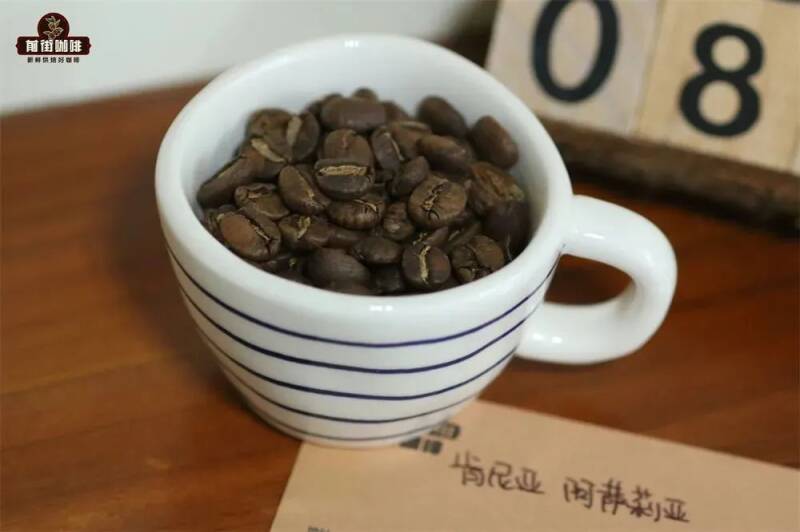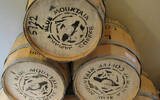Why is Kenyan coffee so sour? What is Kenya's K27 Treatment?
When it comes to sour coffee beans, many people will think of African coffee, in which Ethiopian and Kenyan coffee is the representative of African coffee, but there are obvious differences in the sour quality of coffee between the two countries. Ethiopia's acid is more refreshing and bright, while Kenya is thicker and stronger.
Why is Kenyan coffee so sour? In addition to benefiting from the country's rich natural resources, it is also affected by the K72 treatment known in the picture, as well as the main varieties of SL28 and SL34 coffee grown in the country.
Kenya is located in eastern Africa, most of the territory is a plateau with an average of 1500 meters, and is cut north and south by the eastern branch of the East African Rift Valley, dividing the highland into eastern and western parts, and there are many volcanoes along the line. one of the most famous is the extinct volcano Mount Kenya. The soil here is affected by volcanic ash and is rich in phosphoric acid, which makes the coffee here rich in fruit acidity.
Initially, Bourbon Bourbon was planted in Kenya, and Kent Kent and Jamaica Blue Mountain Iron pickup truck Typica were introduced, but none of them was ideal. Therefore, the variety selection was entrusted to Scott Agricultural Laboratory (Scott Laborotary). In the following four years, Kurt Agricultural Laboratory selected 42 coffee trees from different producing areas and studied their yield, quality, drought resistance and disease resistance. All the selected coffee species were prefixed with SL (Laboratory Democratic acronym), and SL28 and SL34 were one of the superior varieties. Today, however, Scott Lab has been renamed Kenya National Agricultural Laboratory (NARL), but the name and number of coffee varieties have been retained.
SL28 is a coffee variety found in a place called Tanganyika (now Tanzania), and genetic tests have confirmed that SL28 is related to the bourbon Bourbon genome. SL34 was selected from a coffee farm in the Kabete area near Nairobi, Kenya's capital, and genetic tests showed that SL34 was linked to the iron pickup Typica genome.
The planting characteristics of SL28 and SL34 are very similar. They both have the characteristics of high yield and easy to grow. They are suitable for planting in middle and high altitude areas and have complex and changeable acidity and flavor and remarkable citrus and black plum characteristics.
Although, the yields of these two varieties are not as large as before, and are vulnerable to viruses such as coffee leaf rust. At the same time, the Kenyan government has also made great efforts to promote the cultivation of coffee varieties with high yield and high disease resistance, such as K7 and Ruiru 11, but their flavor is not as unique and rich as SL28 and SL34. Therefore, many farmers in Kenya are still planting SL28 and SL34 varieties.
In addition to the unique variety of coffee, the Kenyan method of washing is also special. In the general water washing treatment, the fermentation time is rarely more than 36 hours, while the Kenyan water washing treatment is special in that the fermentation time is as long as 72 hours.
After the coffee farmers harvest, the high-quality coffee berries are selected by flotation, peeled and fermented for 24 hours, the pectin is cleaned after fermentation, and then fermented again in a clean pool for 24 hours, then the residual ingredients are cleaned up. Put it into a clean pool to ferment for 24 hours, and finally put it on a special steel rack to dry.
It can be fermented for 72 hours in three cycles, so this treatment is called Kenyan 72-hour fermentation water washing treatment, referred to as K72. Coffee beans fermented for a long time at low temperature can develop bright, clean, but full acidity and flavor.
Combining these conditions, Kenyan coffee is famous all over the world for its bright and complex raspberry sour aroma, sugarcane sweetness and juicy acidity, and is loved by many people in the coffee industry. Qianjie Coffee has a coffee bean from Salia Asail processing Plant in Sika, Kenya, selected SL28 and SL34 varieties, K72 washing treatment, brewed with virgin fruit and black plum flavor, bright acidity, outstanding sweetness, juicy taste and clean taste.

For more information about coffee producing areas, please scan the code directly and follow: coffee comments.
Long press the QR code to follow:
Important Notice :
前街咖啡 FrontStreet Coffee has moved to new addredd:
FrontStreet Coffee Address: 315,Donghua East Road,GuangZhou
Tel:020 38364473
- Prev

Immediate results?! Ruixing Coffee adds another "smooth artifact"?!
▲ Click to pay attention| Daily Boutique Coffee Culture Magazine Coffee Workshop is a "new talent" in the coffee industry. The frequency of updates of Lucky's products is obvious to all. Although old fans occasionally complain about the new works of the R & D team, as long as it comes to a new day for drinks, they will forget their previous experiences and compete to "walk through the minefield."
- Next

Indonesia plans to ban the export of raw coffee beans!
According to Indonesian media reports, during the BNI Investor Daily Summit in Indonesia held at the Jakarta Convention Center from October 8 to 9, 2024, President Joko Widodo proposed that the country is considering banning coffee
Related
- Being chased out of the rain in front of Starbucks?! Store: Sheltering from rain under umbrellas poses a safety hazard
- The white moonlight has changed?! Lucky launches "Big Winter Pear American"
- Hand-brewed coffee three-stage method, high-sweet and universal brewing method to share! What does the high sweet water level of hand-brewed coffee mean?
- What is the difference between raw, refined and full espresso coffee? How to extract espresso and taste good?
- A complete list of coffee bean names and their meanings! What is Yejia Shefi coffee? Where is Mantelin coffee?
- What grade does Arida Manor Kaduai coffee beans belong to? What treatment is Arida ASD slow anaerobic sun exposure?
- The milk tea cup becomes smaller?! Overlord Tea Girl launches a new "Return to Yunnan" series
- Accused of selling counterfeit and high-priced coffee beans! Well-known boutique coffee brand "Oukelao" bowed and apologized!
- How to make espresso dumplings? Can I eat coffee and glutinous rice balls together?
- Save the unformed and stagnant powder cakes in one second! What is the problem with stagnant water in the powder bowl of the espresso machine?

